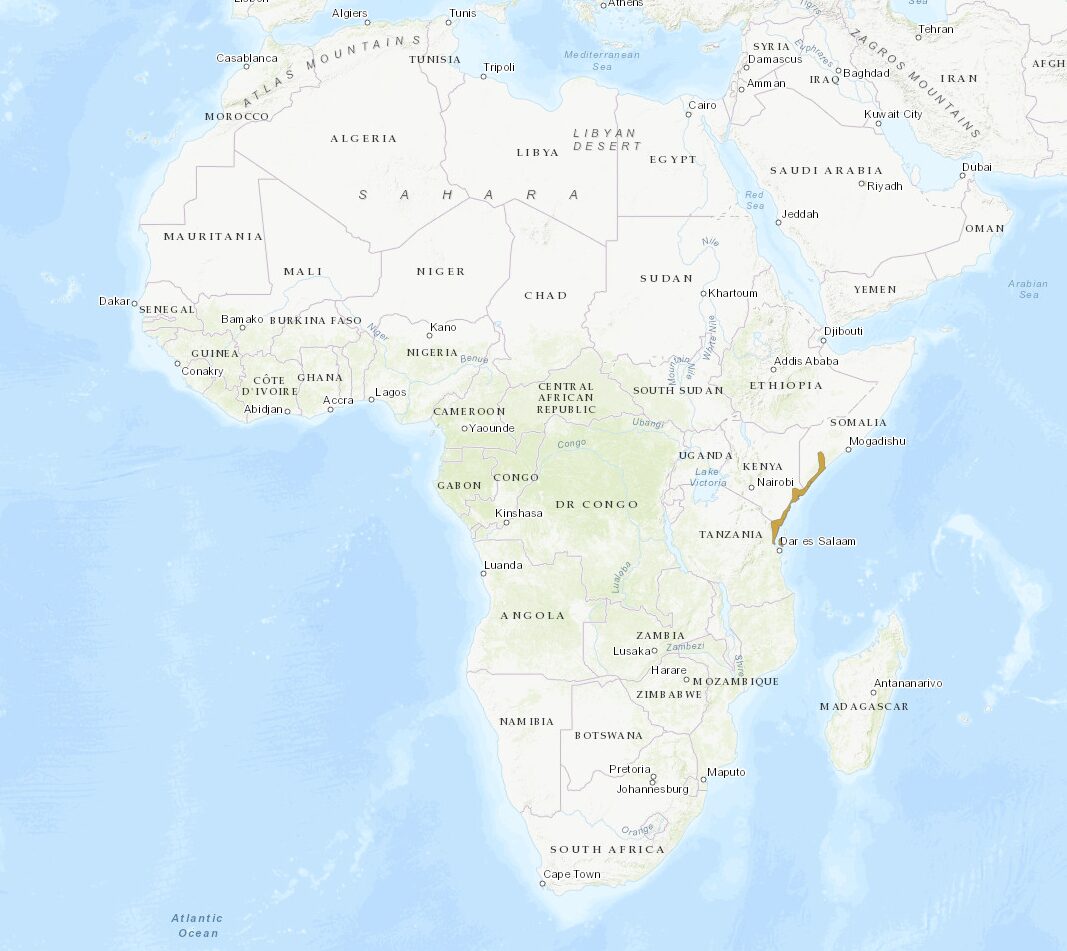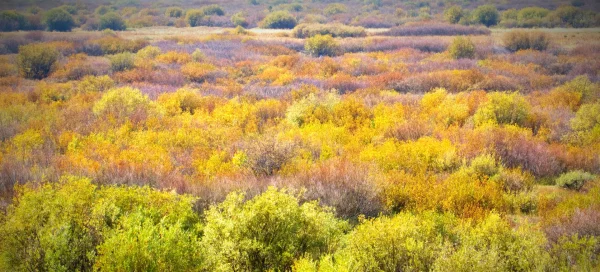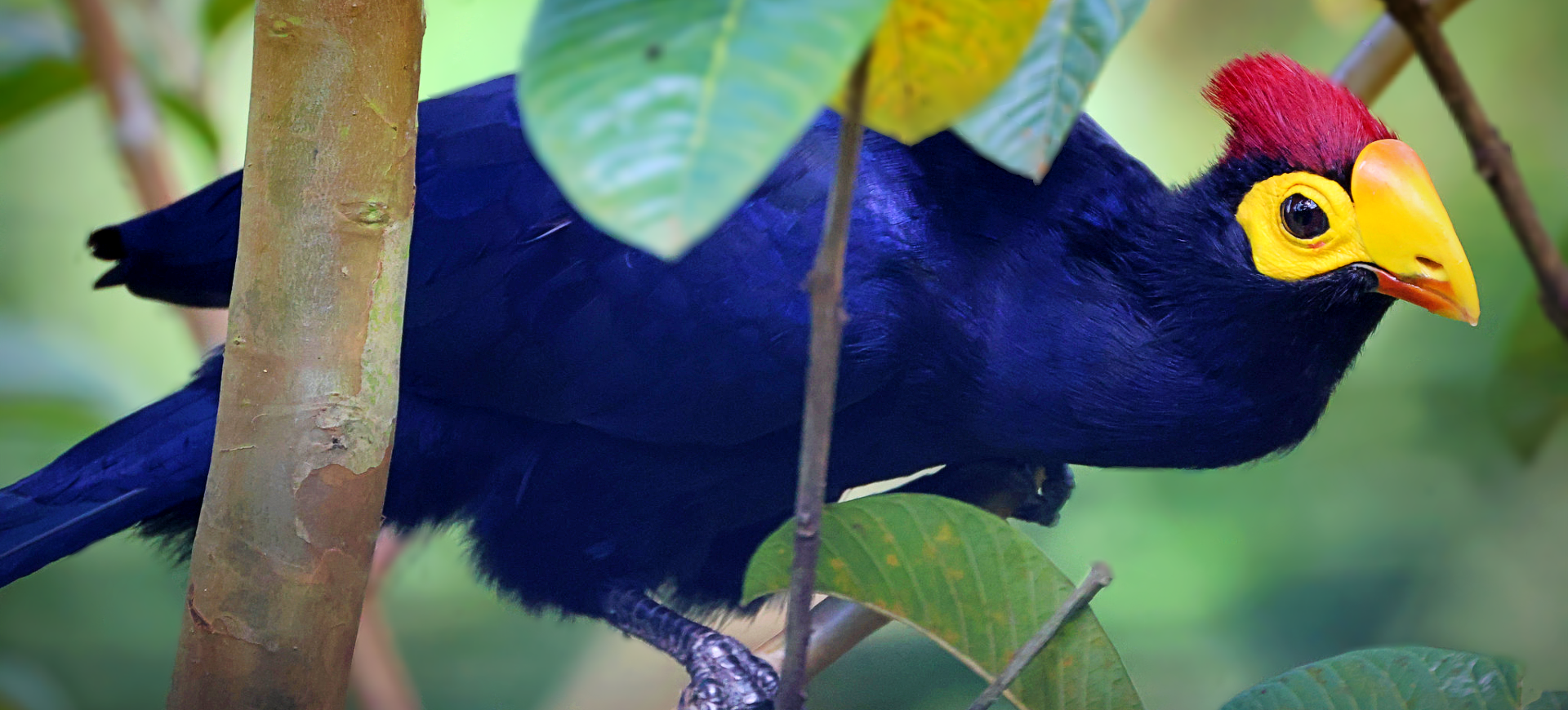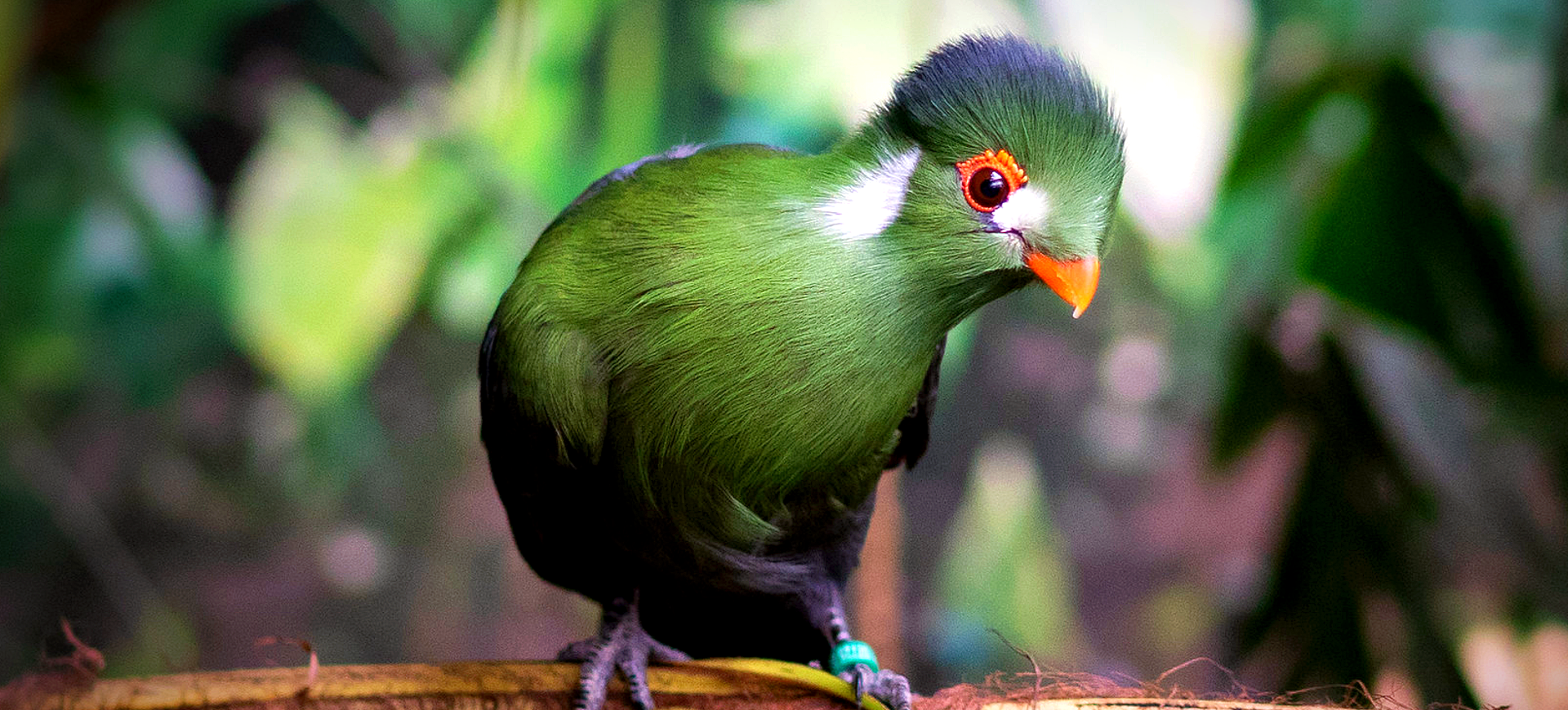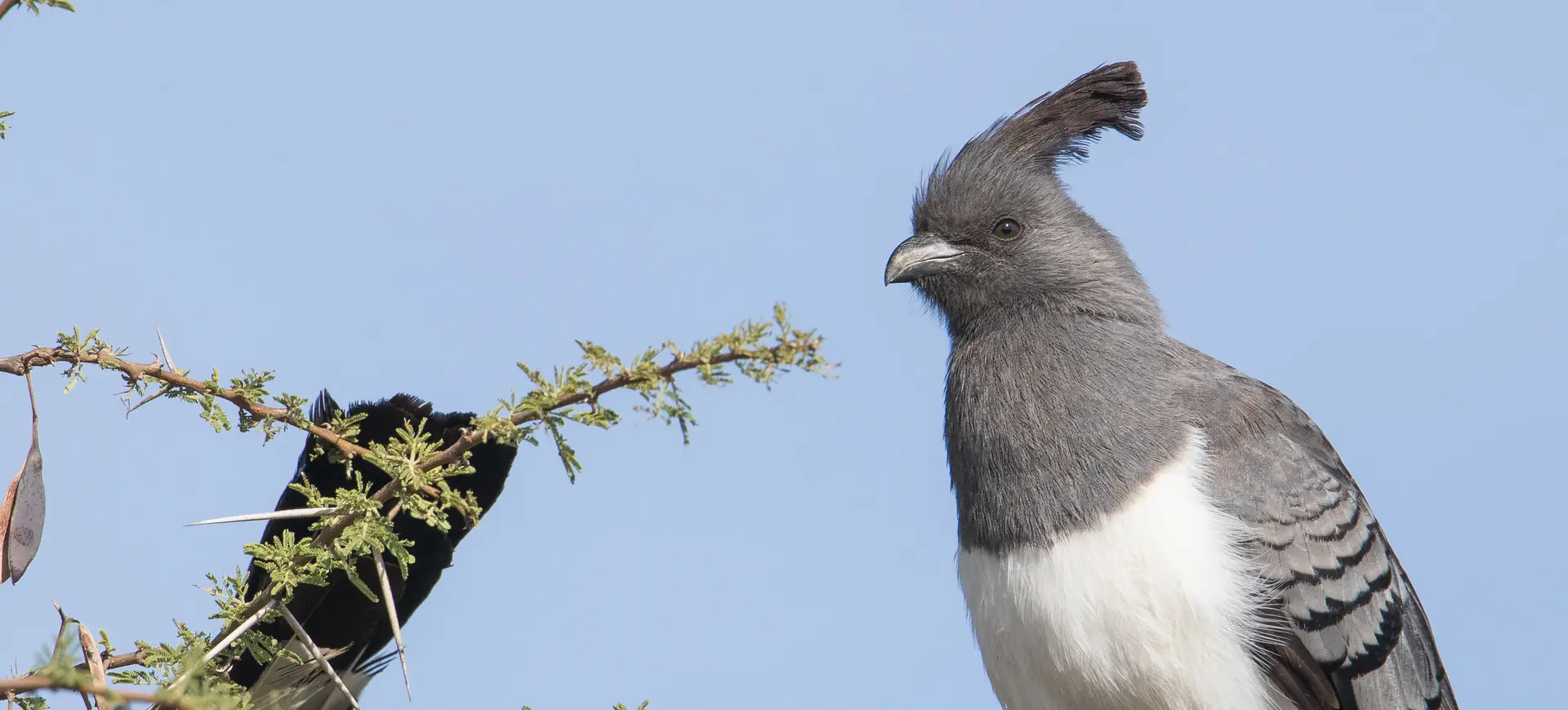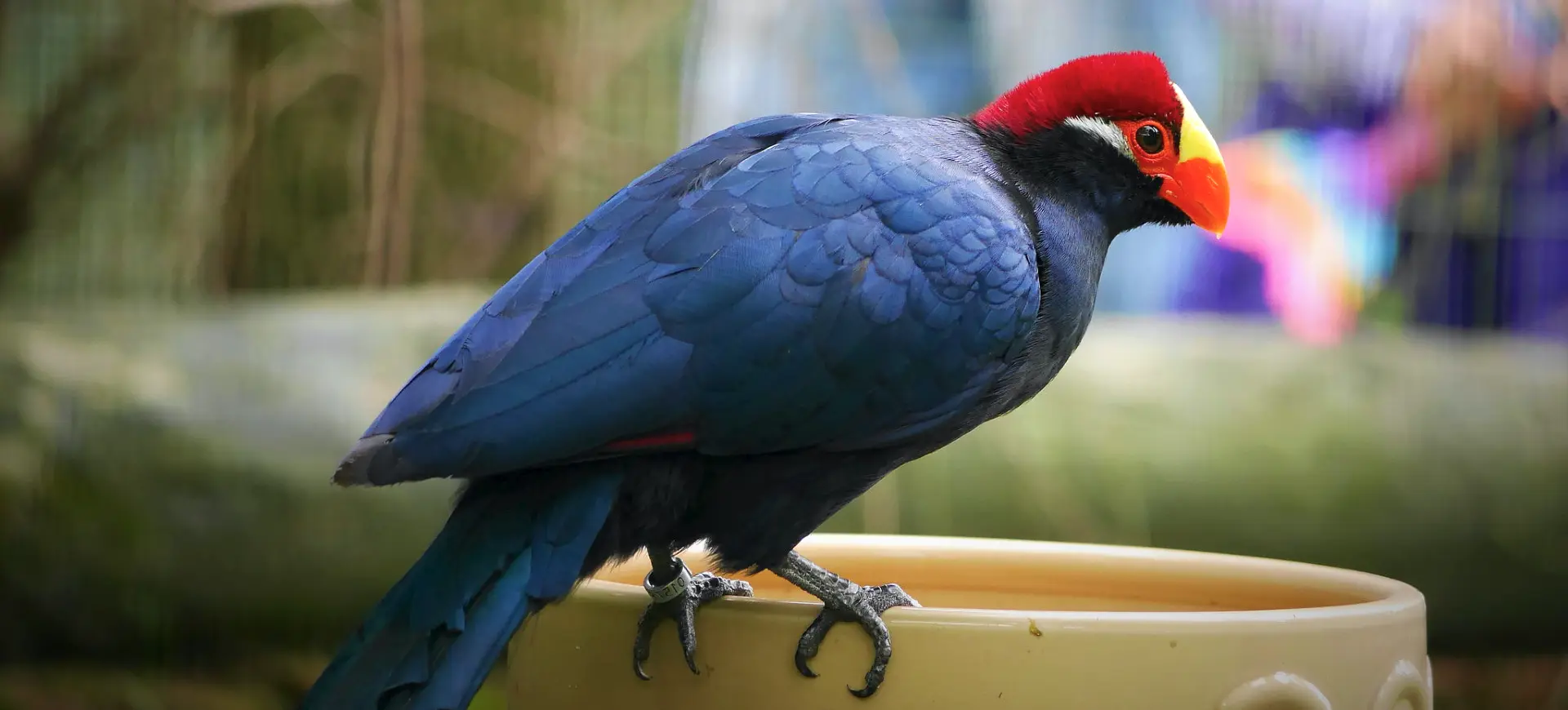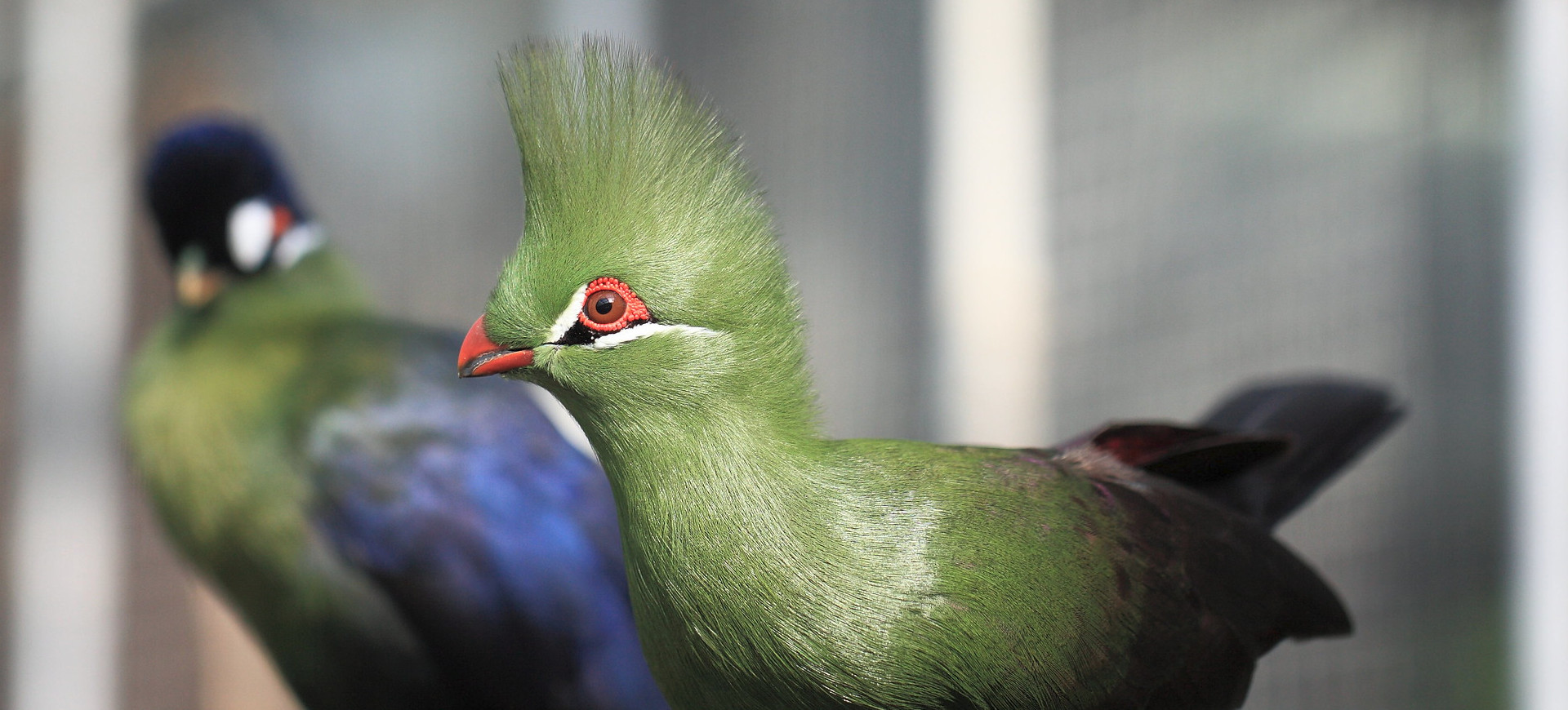Overview
Fischer’s Turaco, scientifically known as Tauraco fischeri, is a vibrant and striking bird species native to the coastal and adjacent inland forests of East Africa. Characterized by its predominantly green plumage, which shimmers with a metallic sheen in sunlight, this bird also features a distinct crimson wing patch that becomes visible during flight. The face is adorned with a bright blue patch around the eye and a small but noticeable red bill, adding to its colorful appearance. A crest of elongated feathers on the head can be raised or lowered, depending on the bird’s mood or social interactions.
Fischer’s Turacos are frugivorous, feeding mainly on fruits, berries, and occasionally leaves, playing a crucial role in seed dispersal within their habitat. They are known for their strong familial bonds, often seen in small groups communicating with various calls, from deep grunts to high-pitched shrieks. Despite their ability to fly, these turacos spend considerable time hopping among tree branches in search of food. Their nesting habits involve building a flimsy platform of twigs in trees, laying their eggs and raising their young with care.
The conservation status of Fischer’s Turaco highlights the need for habitat protection, as deforestation and habitat degradation pose significant threats to their populations. Efforts to preserve their natural habitats are crucial for the survival of this species, underscoring the importance of conservation initiatives in maintaining the biodiversity of East Africa’s forests.
Taxonomy
Kingdom
Phylum
Class
Order
Family
Genus
Species
Type
Current distribution:
Fischer's Turaco is distributed across several countries in East Africa, with populations concentrated in the coastal and nearby inland forests. Despite facing habitat-related challenges, they have managed to maintain stable populations in regions where their habitat remains intact.
Conservation efforts are essential for ensuring Fischer's Turaco's continued presence in these areas. Habitat protection, research, and monitoring programs are crucial for understanding the species' ecological needs and addressing the threats it faces in the wild.
Physical Description:
Fischer’s Turaco exhibits a stunning green plumage covering most of its body, except for the crimson wing patch, which is particularly conspicuous during flight. The blue facial skin and red bill contribute to its distinctive appearance, making it one of the more visually appealing species within its range. Adults typically measure 40 to 43 cm in length, making them medium-sized birds within the turaco family.
The crest of elongated feathers on the head is a notable feature, often used in social displays and communication. Both males and females share a similar appearance, with little sexual dimorphism observed in the species. Juvenile Fischer’s Turacos have a duller coloration and lack adults’ fully developed crest and vibrant facial skin. Their strong legs and feet are adapted for gripping branches, reflecting their arboreal lifestyle.

Lifespan: Wild: ~10 Years || Captivity: ~30 Years

Weight: Male: 0.5-0.6 lbs (230-269 g) || Female: 0.5-0.62 (227-283 g)

Length: Male & Female: 16-17 in (40-43 cm)

Wingspan: Male & Female: 20–22 inches (51–56 cm)

Top Speed: 20 mph (32 km/h)
Characteristic:
Native Habitat:
Fischer’s Turaco inhabits the coastal and adjacent inland forests of East Africa, particularly in areas with dense tree cover and abundant fruiting vegetation. Their range extends from Somalia through Kenya to northeastern Tanzania, including the Zanzibar archipelago. These habitats provide the necessary resources for feeding, breeding, and shelter.
The preservation of these natural habitats is critical for the survival of Fischer’s Turaco, as deforestation, habitat fragmentation, and agricultural expansion threaten their existence. Protected areas and conservation initiatives focused on forest conservation are vital for safeguarding this species and the biodiversity of their ecosystems.
Climate Zones:
Biomes:
WWF Biomes:
Biogeographical Realms:
Continents:
Diet:
Diet & Feeding Habits:
Fischer’s Turaco primarily feeds on fruits, berries, and occasionally leaves and flowers. Their diet is crucial for seed dispersal, contributing to the health and regeneration of their forest habitats. They typically forage in the canopy, using their strong bills to pluck fruits and berries from branches.
Fischer’s Turaco’s frugivorous diet requires a habitat rich in fruit-bearing trees and shrubs. They are known to visit gardens and cultivated areas adjacent to forests in search of food. Feeding involves solitary and group foraging, with birds often communicating vocally to maintain contact within the foliage.
Mating Behavior:
Mating Description:
Fischer’s Turacos are monogamous, forming strong pair bonds that may last for several breeding seasons. They exhibit elaborate courtship displays, which include vocalizations and physical displays using their crests and wings. Nesting occurs in trees, where a simple platform of twigs is the base for their eggs.
Both parents participate in incubating the eggs and feeding the chicks, demonstrating high parental care. The breeding season is closely linked to the availability of food, ensuring ample nourishment for the growing chicks. Conservation of their breeding habitats is crucial for the reproductive success of Fischer’s Turaco, highlighting the importance of preserving their natural environments.
Reproduction Season:
Birth Type:
Pregnancy Duration:
Female Name:
Male Name:
Baby Name:
Social Structure Description:
Fischer’s Turacos are social birds, often seen in pairs or small family groups. They maintain close familial bonds, with group members communicating through various vocalizations. Territorial behavior is observed, particularly during breeding, when pairs defend their nesting sites from intruders.
Fischer’s Turacos’ social interactions, including their courtship displays and cooperative breeding behavior, play a significant role in their survival and reproductive success. Understanding their social structure is important for conservation efforts, as it provides insights into their behavior and habitat requirements.
Groups:
Conservation Status:
Population Trend:
Fischer’s Turaco holds a classification of Least Concern from the International Union for Conservation of Nature (IUCN), reflecting a stable trend in its population across its endemic regions in East Africa. This status suggests that, at a global scale, Fischer’s Turaco is not currently at immediate risk of extinction, benefiting from the relative vastness and conservation of its natural habitats. However, this does not diminish the importance of continued monitoring and conservation efforts to maintain the species’ overall health and numbers.
Despite theTuraco’s stable status, localized threats pose significant risks to certain populations, particularly those affected by human expansion and land-use changes. Habitat destruction and degradation, driven by deforestation for agriculture and urban development, directly threaten the bird’s feeding and nesting grounds, potentially leading to isolated pockets of population decline. Therefore, ongoing and enhanced habitat protection measures are crucial, ensuring the species’ long-term survival amidst increasing environmental pressures and human activities.
Population Threats:
The primary threats to Fischer’s Turaco include deforestation for timber extraction, agricultural expansion, and urban development, which lead to habitat loss and fragmentation. Additionally, climate change may alter their habitat and food sources, posing a long-term threat to their populations.
Efforts to mitigate these threats include habitat conservation, sustainable land management practices, and community engagement in conservation initiatives. Protecting East Africa’s forests is essential for Fischer’s Turaco’s survival and preserving the region’s biodiversity.
Conservation Efforts:
Conservation measures for Fischer’s Turaco focus on habitat protection and restoration, including establishing protected areas and reforestation projects. Education and awareness programs aimed at local communities can foster conservation support, reducing the impact of human activities on their habitats.
Research and monitoring are important for understanding the species’ ecology and informing conservation strategies. Collaborative efforts between conservation organizations, governments, and local communities are crucial for protecting Fischer’s Turaco and their natural habitats.
Additional Resources:
Fun Facts
- Fischer’s Turaco’s vibrant green plumage is due to the unique pigment turacin, found only in the turaco family.
- Unlike many other bird species, turacos can digest green pigment, reflected in their striking plumage.
- Their loud and varied calls make them one of the vocal protagonists of their habitat, often alerting others to the presence of predators.
- Despite their bright colors, Fischer’s Turacos are surprisingly well camouflaged among the foliage of their forest habitats.
- They are capable of short bursts of flight but prefer hopping and walking along branches, showcasing their adaptability to forest life.
- Conservation efforts for Fischer’s Turaco also benefit many other species that share their habitat, highlighting their role as an indicator species for forest health.
- The red wing patches, visible only during flight, are a startling contrast to their mostly green body, making them a spectacular sight in the wild.
- Fischer’s Turacos are part of the local folklore in many parts of East Africa, often associated with omens and myths.
- Their fruit diet makes them important seed dispersers, contributing to the health and regeneration of their forest ecosystems.
- Fischer’s Turaco’s blue facial skin and red bill are among the most colorful and distinctive features in the bird world, adding to its appeal both in the wild and in captivity.


